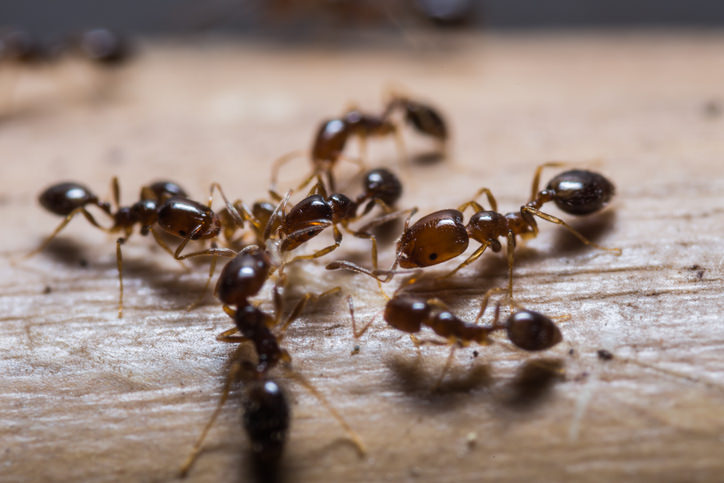Carpenter ants are pesky invaders that can cause significant property damages if left unchecked. Although it is often mistakenly believed that carpenter ants eat wood, they do not. However, they will chew on wood to create tunnels and build nests for their colony. Unfortunately, ants can cause extensive damage to wood, including wood flooring and wooden support beams.
If you see ants in your home, it is important that you properly identify if they are carpenter ants. Knowing how to identify carpenter ants can assist you in determining the best way to deal with the invasion, but don’t forget to call your local pest control company if you know you are having carpenter ants.
Identification
There are varying species of carpenter ants, which makes identification a bit tricky. However, there are some common features you can look for to tell if you have a carpenter ant problem. First, the ant is approximately 3.4 to 13 mm long. The colour of the ant may vary. Reddish coloured or black carpenter ants seem the most common, though they can also appear brown, orange, and yellow.
Carpenter ants are rather large. In fact, they are one of the largest ant species. However, you should not automatically assume that you have a carpenter ant invasion if you spot a larger sized ant in your home. Instead, take a look at some of the other physical characteristics of the ant.
Many people confuse carpenter ants for termites, though there are differences between the two. Knowing what those differences are can prevent you from mistaking the identity of your home invader. Carpenter ants have an elbow-shaped bend in their antennae. If you look at their bodies, you may also notice that their waistline appears pinched just above the abdomen.
Unlike termites, which have back and front wings of similar length, the carpenter ant has wings that are longer in front and shorter in the back. Also, termites do not have bends in their antennae, so make sure you pay close attention to those differences. When you contact a professional for help, you do not want to mistakenly say you have a termite problem.
The carpenter ant’s body has three noticeable sections. If you look closely enough, you may notice fine hairs that ring the ant’s abdomen just at the tip. Of course, you will likely have to grab a magnifying glass to see the hairs. If you manage to inspect one long enough and notice all of the features mentioned, you likely have a carpenter ant problem.
Handling the Issue
Once you are able to identify carpenter ants in and around your home, it is time to take action. The sooner you take action, the better. Contact a professional ant control company near you for assistance with carpenter ant control and removal. The longer you wait, the more likely it is that the ants will cause damage to the wooden structures of your home.
